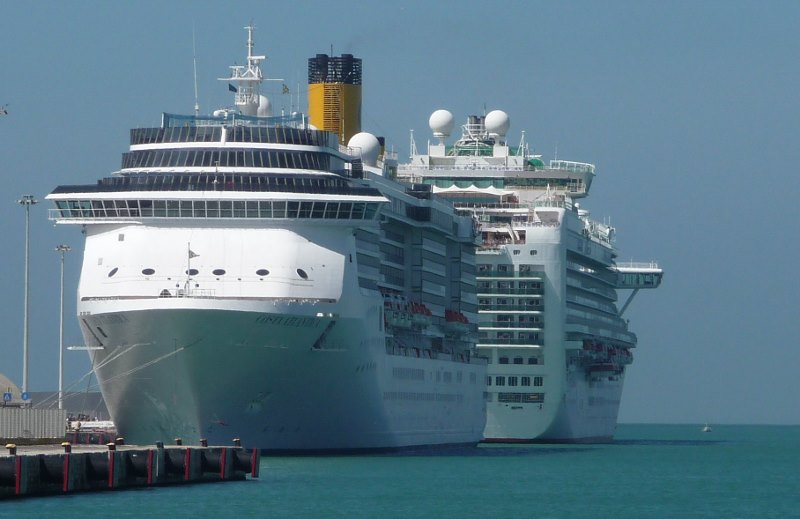I’ve been on a couple of cruises now but before I went on the first one, I remember wondering whether cruise holidays were any good. Not just overall, but good for me. And us, as a family: parents in their 40s and early teenage kids. During my second cruise, I decided to use the Sea Days to write up my thoughts on the matter. I thought I’d try and explain what’s actually involved in a cruise holiday, so people can decide if it’s good for them.
I started by considering whether a cruise holiday was a good idea, in terms of what it delivers. It certainly isn’t a cheap option! I wondered whether it was possible to visit the same destinations more cheaply. And, yes; it probably is. Particularly for a Baltic cruise, given that I live in the UK. I could just drive… I did something similar a few years ago with my brother. We drove around a lot of central Europe over the course of a couple of weeks. For something like a Mediterranean cruise, I could probably travel by bus and/or train to those destinations more cheaply.
But would these options be as relaxing, in terms of the holiday? Almost certainly not, but there would be more of an adventure element to them.
Would these non-cruise alternatives be as luxurious? Only if I took charter bus options and stayed in top end hotels. Which would actually cost more than simply doing the cruise…
The beauty of a cruise is being able to draw your curtains on one city and, the following morning, open them to somewhere entirely different.
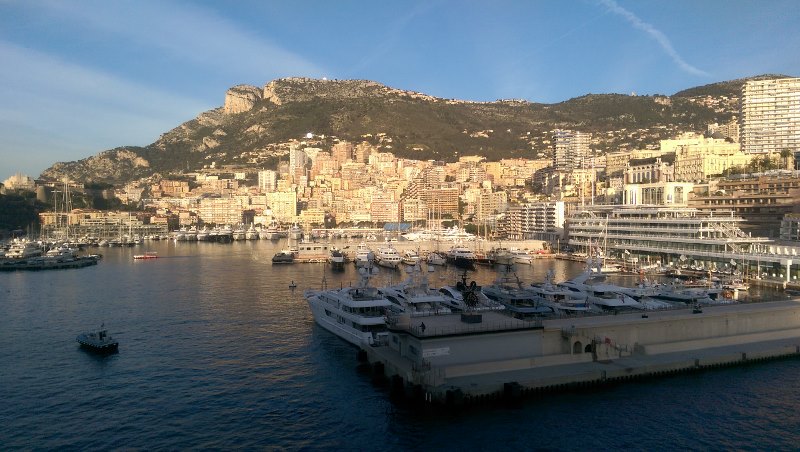
It’s an amazing experience and, for a surprisingly long time, keeps its shine. On top of that, there is the nightly fine dining, and it is genuinely ‘fine’. Additionally, there is the huge variety of entertainment and, all the time, the many, many crew members doing their utmost to ensure you have a good time on your cruise holiday.
A cruise holiday is, quite simply, an amazingly decadent experience that seems almost too good to be true. And that’s because, unless you’re very careful, it can be. I’ll explain this in more detail a bit later on. For now, I just want to draw your attention to the fact that, while you’re on board the ship you’re a captive audience. And that almost everyone and everything else on the ship is designed to separate you from more of your money. And I do mean, ‘more’; you’ll have paid a good deal of money for your cruise holiday. But ‘more’ is never ‘enough’ on a cruise.
Before I get drawn too far in, I want to go back to the start. I want to look at the steps you go through to find yourself on a cruise holiday in the first place.
There’s a good chance that the idea of taking a cruise holiday will have started by word of mouth. Someone you know has done a cruise holiday and had a good time. Hearing this will get you on Google, just to see what they’re talking about; maybe that’s what led you here…
And that’s when you realise just how many cruise companies actually exist. It’s likely that you had been under the impression that there are just a couple of cruise lines but there are loads:
- Celebrity
- Cunard
- Disney
- Holland America
- Marella (Tui)
- MSC
- Norwegian
- P&O
- Princess
- Riviera
- Royal Caribbean
- Viking
And you think, “That many cruise lines must mean loads of people go on cruises and they can’t all be rich.” And so you see the bait.

And then you find out that there are even cruise, price comparison sites:
So you think, “Anything with price comparison sites means there are good deals available.” And you nibble on the bait.
[Please note that I’m not endorsing any of these cruise lines or comparison sites. And neither of these lists are in any way exhaustive. I’m just pointing out that there’s a lot of choice and variety out there.]Given all that choice, you decide to check to see if any cruises go to that place you really want to go to. Just as a matter of interest, of course. And you notice that there is a cruise going there; just at the perfect time, too. And, without really noticing it, you’ve taken the bait.
Then, despite yourself, you decide to look at a few prices and you conclude that; while they are expensive, if you put off buying this thing and get a cheaper version of that thing… you can afford it! And, after all, it’s only a one off; the holiday of a lifetime. And you deserve it after everything that’s been going on.
That noise in the background? That’s the sound of you being reeled in. Just ignore it…
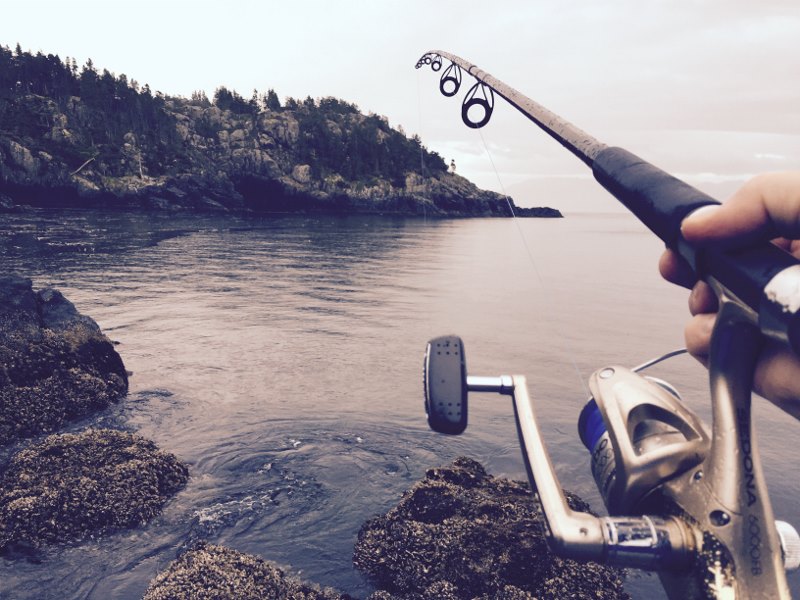
Photo by Alan Bishop on Unsplash
Right, so you’re paid up and you’re going on a cruise.
Good. I’m happy for you and I’m sure you’ll have a great time. But it’s an unusual process, getting from booking to sailing, so I’ll point out a few things to expect.
Emails. Rather a lot of them. Filled with your itinerary, including: which ports you’ll be calling at, when and for how long. Also information about the cruise line, the cruise ship, the deck plans and the room layouts. There is little as fascinating as studying deck plans and working out where everything is in relation to your room. All good stuff.
As the date of departure approaches, you need to ready yourself. You should fill in the on-line documentation to provide your personal details, passport number, etc. If you’re doing this early enough, you can also:
- Book your excursions
- Add a credit/debit card to your account
- Express any dietary requirements
- Decide your eating plan; type of restaurant and preferred time of evening dining
- Book drinks packages
- Sign up to various kids clubs, if you’re traveling with youngsters
You also need to print your boarding pass and your luggage ticket. The latter of which includes the origami instructions necessary to attach it to your luggage. The label will also include the company alcohol policy, which is basically: you’re not allowed to take any alcohol on board. Well, except for one bottle of champagne, or wine… to last the whole cruise. Any more than that will result in a corkage charge, ‘even if you don’t intend to drink it’. No spirits, liqueurs or liquors are allowed, at all.
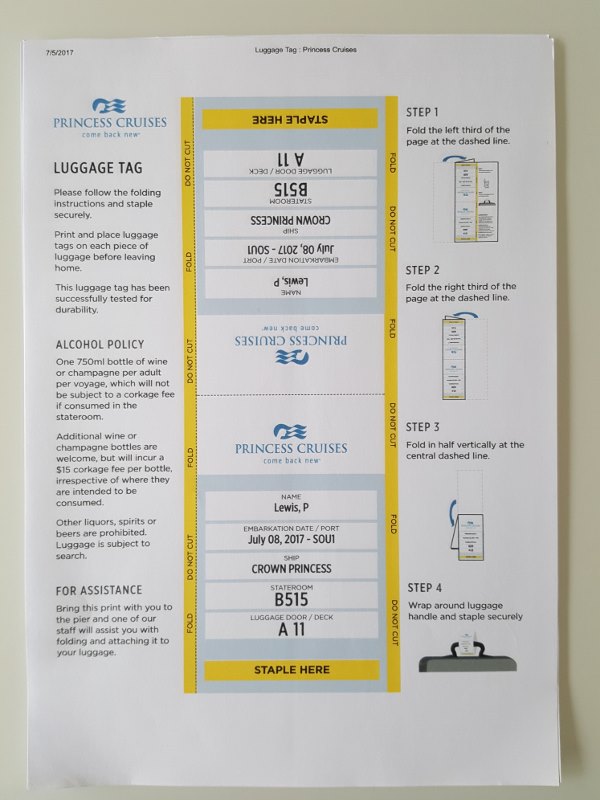
A not so subtle reminder, for those looking for it, that once you’re on board, they want your money… bad!
On which note, these emails also contain a multitude of ways to spend extra money. Some of these ‘extras’ might actually be things you had thought were including in what you’ve already paid. Some of the extras are:
- Travel to the dock
- Parking (if you drive)
- Drinking on board. Not just alcohol; anything. Including water!
- Trips and excursions into the ports you’re going to visit
- Eating in many of the restaurants
- Tipping
- Room upgrades
With regard to rooms, there are a number of options. A cruise ship will have many floors. The bottom couple don’t count as they’re the crew quarters and will be out of bounds. The next three, or so, will be largely put aside for food, retail and entertainment. The top three, or so, will likewise be dominated by food and entertainment. Those in between, are given over almost entirely to accommodation. The ship on which I’m typing this has six decks entirely for the staterooms (cabins/rooms).
As you can imagine, the entire outside of both sides of these six decks are lined with staterooms, the vast majority of which have balconies. These are either ‘Outside’ (no balcony) or ‘Balcony’ staterooms. The staterooms are joined by corridors running the length of the ship. In most places, the other side of these corridors is lined with ‘Inside’ staterooms. The ‘Inside’ rooms are the cheapest options on board, as they have no windows, hence no view. At the stern of the ship is where the various suites can be found, some of these are quite sizable and are priced accordingly.
It’s very difficult to avoid spending anything extra on board and, just in case you do, the details of a credit or debit card will be taken. This card is then linked to the ID card you be given during embarkation. You need to keep this card on you at all times you’re away from your stateroom. You can’t get back into the room without it, for a start. It’s also what gets you on and off the ship when you dock.
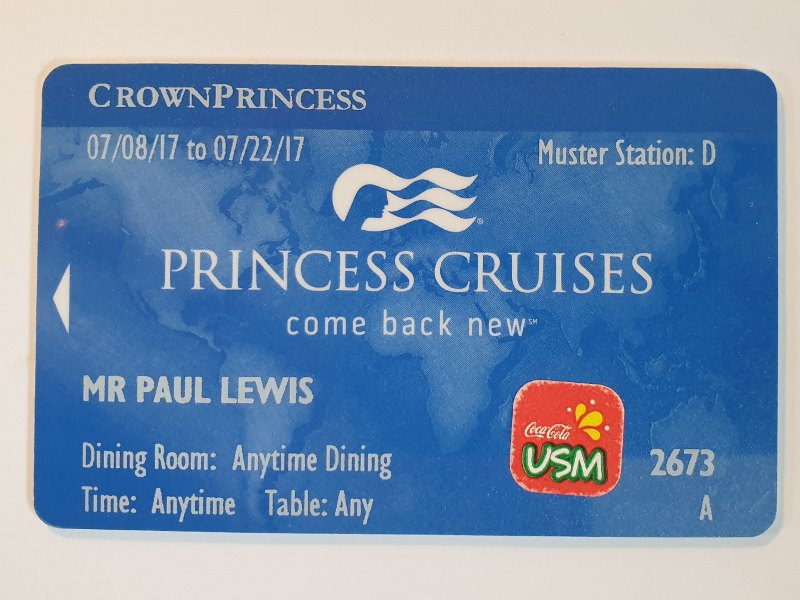
Additionally, the ID card is the only way to buy anything while on board. Anything from a plug adapter, to an original piece from the Art Gallery goes on that card. You’re encouraged to settle your account before you disembark. Not that it matters, they have your credit (debit) card details and you’ve already signed something that gives them permission to settle your account in your absence. And any children traveling with you? They also get a card linked to your account! Until you try it, you won’t believe how seductive it is to simply wave your card and get whatever it is you need, or want.
And, on board, there are whole industries in place to cater to your wants:
- Photographers, capturing a variety of moments of you, for you. This can start before you even step on board. Packages of these precious memories will be available by the end of the cruise.
- Spas, with a wide variety of treatments, the details of which will be waiting for you in your room.
- Attached to the Spa is a gym, whose equipment is free to use but all regular classes are chargeable.
- Drinks packages tailored per person per day, from simple bottles of water, through soft drinks only, to all inclusive of alcohol.
- Excursions for the days in Port.
- Restaurants, Bistros, Gastropubs; all offering high end food, outside of what you’ve paid for.
- Jewellers, boutiques, art galleries and convenience stores.
- Internet Cafe.
Everything is luxurious or, at least, priced like it is. And all of it available with the flash of a card.
Finally, there is a room dedicated to booking future cruise holidays, which may, or may not, be a good thing. Certainly, these cruise holidays are advertised as heavily discounted, although I remain to be convinced of this. But plenty of people are convinced enough to book their next cruise, while still on their current one. Buying future cruises, at least, is not done on your ID card. You have to pay for that separately.
There is one last thing: the tip. There are a lot of crew members on board and they look after you very well. How do you show your appreciation? Do you leave a tip at the end of each meal that you felt the service deserved it? Because, if you’re eating in a restaurant, you’ll feel this for every meal. Do you just leave one big tip at the end to cover all the meals? What about the steward who’s looked after your room all trip? The steward tends to your room at least twice a day. What about all the entertainment staff and the kitchen staff…?

Photo by Michael Browning on Unsplash
Don’t worry, this has all been thought of.
To help you, the cruise will have a suggested daily tip for each person. This amount will vary each trip and may, or may not, apply to children as well as adults. This amount will automatically be added to your account, for your convenience. The tip total will then be added to all your other expenses, across the holiday, and deducted from your credit (debit) card at the end of the holiday. just so you know, the suggested tip on this cruise is $13.50 per person, per day. Over the course of our 15 day trip, for the four of us, this would come to $810 (£616, €721).
You are able to put a stop to this. It seems to be one of the first things that a lot of people do, when they get on board. But you have to go to Passenger Services to stop it. You have to queue up, look someone in the eye and tell them that you want to stop the automatic tip. That someone, incidentally, would have been getting a cut of said tip. It’s not a comfortable process. But then I imagine that’s the point.
One of the good and tricky things you need to juggle in preparation for your cruise holiday, is what to pack.
Various restaurants require different standards of dress, including formal wear. The main restaurants will host one or two formal night per week of the cruise. For men, this typically means a tuxedo, although you can get away with a smart, dark suit. For the ladies, the sky’s the limit!
For the rest of the nights, these restaurants require ‘smart casual’, or what you’d normally wear to a nice restaurant if you were eating out at home. For some men, this might be a lounge suit or a sports jacket, it will certainly require buttoned shirts and smart trousers. Once again, the ladies seem to go to town.
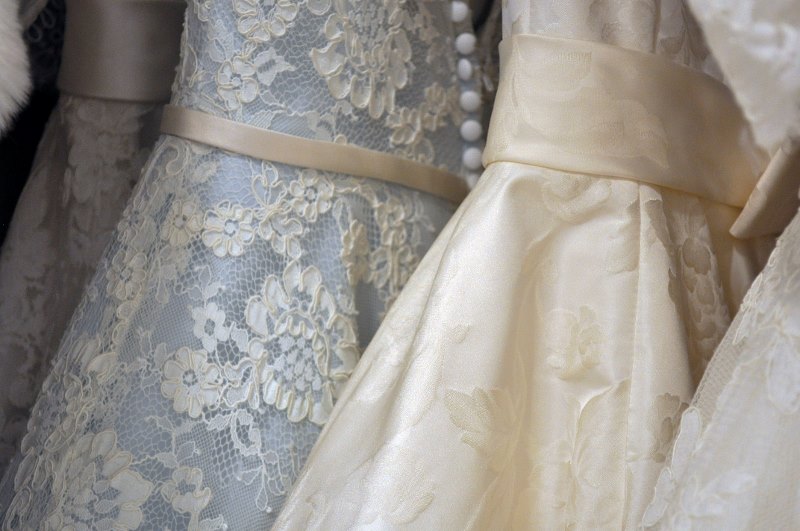
Photo by Anna Docking on Unsplash
You will also need:
- Footwear to match all your outfits
- Sports wear, if you’re going to use the gym (plus footwear… gym shoes?)
- Swimming costumes (plus footwear… flip-flops?)
- Casual wear for days on board
- Casual wear for excursion days (sensible shoes to walk in)
- Cold weather clothes, for the evenings if the weather turns
- Wet weather clothes for the excursions, if the weather turns
To be fair, there is virtually no limit to the amount of luggage you can take on board with you. However, unless you’re in the plushest of suites, there will be a very real limit to the available space, for said luggage, in your room. Particularly if you’re travelling as a family of four, and sharing a stateroom. And if that family of four includes two teenage girls, then… well, the easiest thing to do is accept you’re doomed before you get there. It saves time when you’re trying to unpack.
But let’s not get ahead of ourselves. Let’s go back to the point that you and your luggage arrives at the embarkation point and you see your ship for the first time. The first thing you notice is that it’s huge; a sheer wall of metal rising out of the water. The next thing you think is, “I’m not getting on that thing, it’ll flip over at the first sign of a breeze… I can’t believe it’s not already upside down!”
Perhaps the best way to quell these fears, is to compare the ability of this metal brick to float, against the ability of the metal tube with wings to fly. Just accept that a cruise ship floats in the same way that a plane flies: magic!
Having settled that in your mind, you can stride purposefully towards the embarkation center. At which point, someone will grab your luggage from you. Don’t worry, this is normal, your luggage will arrive at your room at about the same time that you do, without any effort on your part.
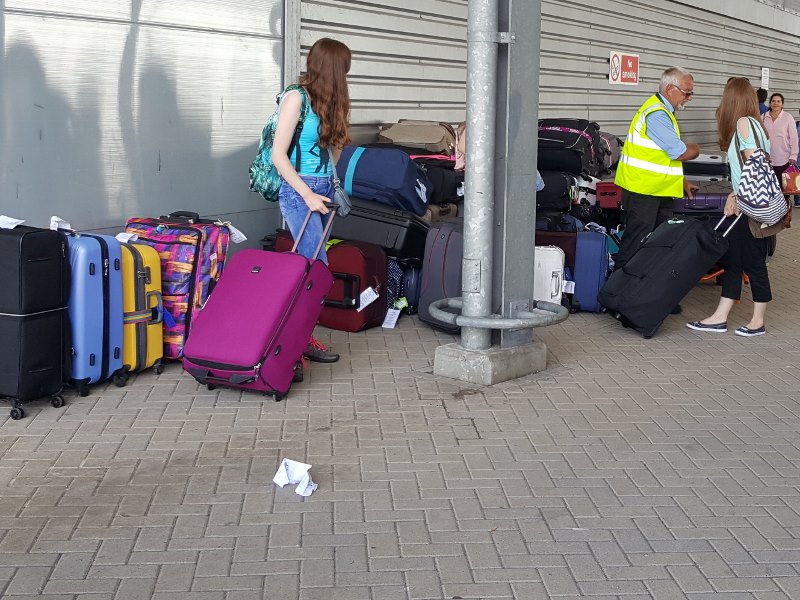
So, unladen, you proceed to the departure lounge, where, at the entrance, they check your printed ticket and issue you with a token denoting your position in the queue. This token can take the form of a number, printed on a coloured card, for example, a green 13. Clutching your token, you head onward and take one of the many hundreds of seats and see what happens next. If you’re lucky, you’ll hear a voice over the tannoy announce, “Can green 8 go to the departure gates please.” And 20, or so groups will start moving.
If it’s a bad day, you’ll hear, “Can yellow 8 go to the departure gates please.” 20, or so groups will still start moving but now you understand just how many people are between you and them. At this point you’re really, really hoping the numbering system goes up to yellow 20, before going to green 1. It doesn’t. It goes to yellow 50!
Actually, it might not, so don’t worry about it. The boat won’t sail without you and it gives the stewards time to get your luggage to your room. Besides, you need a bit of time to fill in the medical declaration. The one that says that you don’t have any sort of vomiting or diarrhea illness. The one that casually mentions that if you develop such a bug on your cruise, you’ll be locked in your cabin until they’re sure it’s gone away.
Yes, seriously!
In the confined space of a cruise ship, a D&V bug can spread like wildfire, resulting in the whole ship being put in quarantine. Better you have a spoiled holiday than everyone on board has a spoiled holiday (including you). No, you won’t get a refund if it happens. No, you can’t sue them for ruining your holiday if it happens. If it does happen, and you refuse to play ball, they’ll simply throw you off at the next port of call, and leave you to make your own at home. Yes, they are allowed to do that.

Photo by Ani Kolleshi on Unsplash
It’s worth noting that, although you’ll be confined to quarters for a few days, they’ll still look after you. You’ll still be extremely well fed, when you’re well enough to eat. There’s still a TV in your room. There’s a good chance you’ll have a balcony to rest on. Just let them do their jobs and make the best of it. If you’re not good with this, then a cruise holiday is not for you.
So you you fill in your form and wait for your number to be called. You then join the queue for the departure desk, much like with an air line. You eventually get called forward and hand over your passports. In return, instead of a ticket, you get your ID card and a map of the ship. But only after you’ve linked a credit/debit card to all the ID cards in your group, if you haven’t already done so.
Once you have your ID card, you head to border control and the X-ray machines. Again, much like with an air line. But not exactly alike… You don’t, for example have to ditch all your drinks and fluids. The reason that there’s no bin for your half-drunk bottle of water? Because you can take it through with you! There really is no need to leave your water bottles in a line by the security barriers, just keep them with you. The only liquids the border control will be interested in, is booze.
Having traversed border control, the next stage is ship security and a photographer… the order varies so I’ll assume security is first. To get on board, your card must be scanned. On this first boarding, they might also collect some biometric data to link to your ID card, like a retina scan. Your ID card will be scanned every time you get off and on the ship. If you lose your ID card your life can get difficult. I’m not sure how difficult, but I am sure it won’t be fun. Don’t lose your ID card!
To that end, many people choose to keep their ID cards on a lanyard, either in a card holder, or clipped on directly. If you use a card holder, make sure it’s clear, so the ID card can still be scanned. If you keep it in a pocket, be sure to keep it away from your phone or the radiation of the phone will de-magnetise the ID card’s magnetic strip and you won’t be able to open your cabin door. This is called de-magging and you’ll have to go to the Passenger Services desk to get a new one. They’re quite used to this but if you do it more than once, they can get a bit twitchy.

So, you’re finally on board, which means you get jumped by the photographer, if you haven’t already. Photographers are a part of life on board so you need to make a decision about how you deal with them. You’ll see them:
- When you embark
- When the ship sets sail the first time
- Every time you disembark at a new port
- Each formal night in the restaurants
- Every formal night, in a variety of staged locations, where they offer mini photo shoots against a backdrop
- At various activities that you attend
- Randomly around the ship
If you have no interest in being photographed, just tell them that; it saves time all round. There’s no point in reluctantly agreeing to have your photo taken and then look harassed and grumpy in the resulting shot. If you’re going to let them take photos, commit. Make sure that you’re looking your best, check what’s behind you and ensure it’s the backdrop you want. Get involved. Make sure the photos are as good as they can be. You still don’t have to buy any of them but at least if you decide you want to, they’re worth buying.
If you’re interested in seeing the photos that have been taken, they’re displayed at the end of each day. If you like any, you can buy digital or physical copies. Alternatively, you can wait until the end of the cruise and digitally search through all the photos taken, tagging the ones you’re in. These will then be drawn together to make a portfolio. This is done with one of the photography staff, who will happily explain the costs of the various packages. These packages are based on the number of photos you like and the number of copies you want.
This process takes a lot of time because there’s a lot of money at stake, so make sure you leave plenty of time. You will be given plenty of warning and reminders about sorting out your portfolio. You should remember, however, that no matter how many photos have been taken and how nice they are, you are under no obligation to buy anything.
But back to your embarkation. You’ll almost certainly come on board in the atrium of the ship, with shops and restaurants all around you. They’ll likely all be shut, and remain that way until after your safety drill. But that doesn’t matter right now. What matters is that there will be lifts and stairs by the atrium, so, break out your map and navigate yourself to your room. Don’t worry if you make the odd mistake on the way, the ship is a big beast.
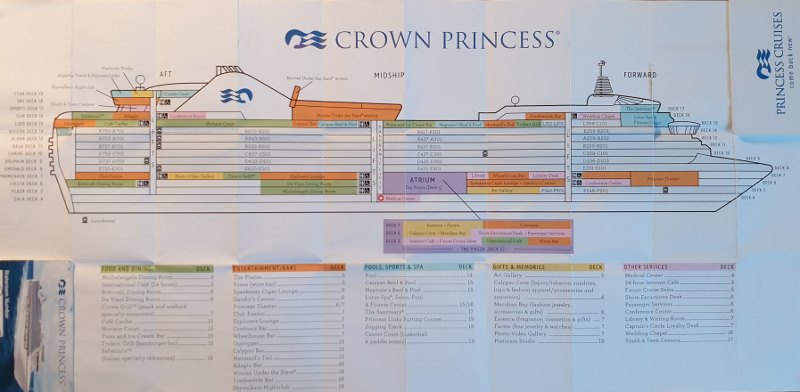
When you find your room, your luggage will probably already be outside your door. If it isn’t, don’t worry, just go inside and it’ll arrive soon. Either way, your cabin steward will shortly knock on your door and introduce themselves. The steward will make sure that you’re familiar with your room and answer any questions you might have. Your steward will also need access to your room at least twice a day; to make up your beds and put away your beds. This means that you can’t just stay in your room all day. Unless, of course, you’re ill… in which case you’ll have to…
It is likely that you’re feeling a bit overwhelmed at the moment, there’s so much to take in. Try to avoid bombarding the steward with too many questions, as (s)he’ll have a lot to do. There will be a sizable welcome pack in your room with a lot of information that will address most frequently asked questions. Once you’ve read all that, if you still have questions, the steward will be happy to answer them.
Part of the information in the welcome pack will be a schedule of that day’s activities on board, including where and when to find them. Additionally, there will be flyers from various of the the retail outlets for their forthcoming events. There may also be information about the available excursions for each of the port days. In actual fact, there’s so much information, it’s difficult to process it all in one sitting.
Which is just as well, because there’s the safety drill to contend with before the ship can sail. Your steward will have made sure you know when it will be and where your muster point is, but this information will also be:
- In your welcome pack
- On the back of your stateroom door
- On the corridor walls
- On the life jackets themselves
- On your ID card

Photo by Chris Yang on Unsplash
Oh, yeah, and everything will be explained in great detail over the ship-wide speakers, one of which will be in your stateroom.
So, at the appropriate time, take your life jacket to the appropriate location and do what they tell you, which is to say; try on your life jacket. Once the drill is over, you’re officially on holiday. Take your life jackets back to your room and unpack, if you haven’t already done so. Or explore the ship, if you haven’t already done so.
Whatever you do, relax and enjoy it, because you’re on a cruise, Baby!
But how are you going to enjoy it? How are you going to fill your time? How will you even know what there is for you to do?
Worry not, if a company is running a cruise holiday, it’s good at this stuff. Every day that you’re on board, you’ll receive a daily guide detailing exactly what is going on, when it is happening and where you need to be to take part. The first of these guides will be waiting for you in your stateroom when you arrive. The next one will appear in the slot outside your door that same evening. The evening edition covers the following day. You’ll get one every evening of your cruise holiday, and they’re very good.
The daily guide on this cruise is called the Princess Patter, after the Princess Cruise lines. It takes the form of a folded A3 sheet, thus providing four sides of A4, full of detailed information. The middle two pages are predominantly a diary of all the events taking place the following day. These events run from 6am until gone 11pm. The diary includes the time and location, and a description of what to expect.
Our cruise started on a Saturday. The Princess Patter edition for the next day included 59 diary entries. And that day was a Port Day, which meant that most of the passengers weren’t even on the ship between 9am and 5:30pm…
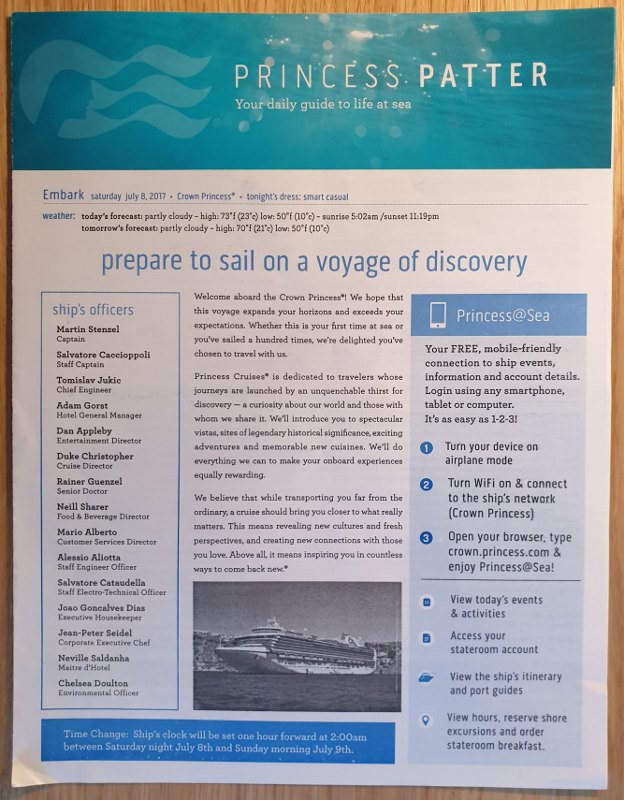
And for Port Days, you’ll have received an extra piece of paperwork the previous evening. Princess Cruises calls this their ‘Port Guide’. This too is a folded A3 sheet and is also full of very helpful information, like shop opening times, tipping culture, expected attire, etc. It will also have a map, but the map will not be up to much. It’s not in the interest of the cruise holiday company to give you a map good enough to navigate by. They want you on their excursions.
To help sell these excursions, in your welcome pack you will find an order form for each Port Day of your cruise holiday, with a good selection of excursions to choose from. If you want to do any of the excursions, you simply fill in your order form and drop it at the Tour Desk. The cost of the excursion will be added to your running total, to be dealt with at the end of the cruise. All cruise excursions have two things in common:
- They’re extremely convenient
- They’re very expensive
Again, for context, I’ll list the prices of the cheapest and most expensive excursions on offer on that first Port Day. Which was Zeebrugge in Belgium:
- Bruges On Your Own [Adult $65.95 / Child $39.95]
- Best of Bruges and Ghent with Canal Cruise [Adult $209.95 / Child $109.95]
To be fair, the expensive option is a nine hour guided trip around all the notable sights and includes entry to the Cathedral. And the canal cruise. This would have cost us $639.80 (£486, €570).
In contrast, the cheapest one is literally just a ride to and from the centre of town. This would have cost us $211.80 (£161, €188). We took a taxi! The taxi was €40 each way.
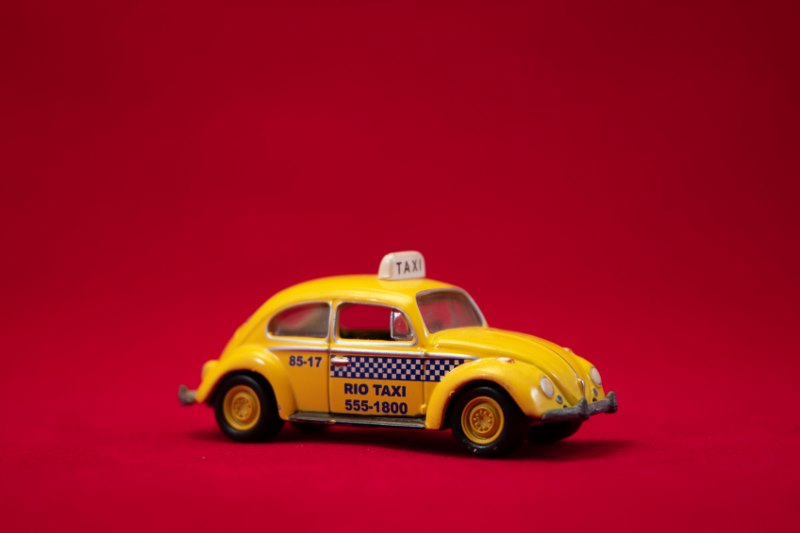
Photo by Eric Nopanen on Unsplash
Another thing to take into account is the age at which ‘Child’ becomes ‘Adult’, as this varies wildly between cruise lines.
Of course, you don’t have to take an excursion, you can do your own thing. There is often a bus laid on to get you from the ship to the local town/city center. On very rare occasions, this bus will be free. The rest of the time it’ll be extravagantly overpriced. If you’re in a group of four, taxis will always be cheaper than the bus. That said, the taxis that are waiting for you by the berth will also be extremely expensive. They know what the cruise says they charge, so they charge that. It’ll be a lot.
However, if you walk out of the Port or Docks, you’ll find another rank of taxis. These are considerably cheaper than the ones allowed to park up by the ship. But if you look around a bit, you’ll find the bus stop. There’s always a bus stop by the entrance, because that’s how the people who work at the Port get to work each day. It might take a bit of deciphering, but the timetable will show that there are regular buses into the town/city centre, because; of course there are. Buses are a far cheaper option.
But there’s an even cheaper choice available in most places, you can simply walk. Sometimes this isn’t an option because the Port is a long way from the centre but, more often than not, if you’re of average fitness, you can walk to where you’re going. It’s what we try to do, if only to try and walk off some of the food we’ve been eating…!
Not that you have to leave the ship on Port Days. A lot of people don’t; they’re not on the cruise for the destinations, they’re on the cruise for the journey. And, with literally dozens of things to do while everyone else is ashore, it’s not like you’ll get bored.
Going back to the Princess Patter daily guide, the back page tells you when and where food is being served. Also, the opening hours for all the bars and restaurants.
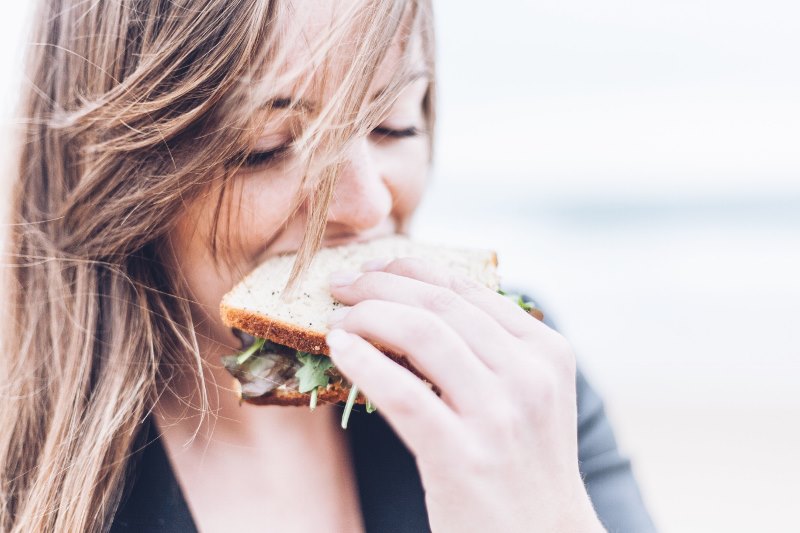
Photo by Gardie Design & Social Media Marketing on Unsplash
In terms of food, the meal timings are as follows:
- Breakfast: 6am – 11:30am
- Lunch Buffet: 11am – 3:30pm
- Afternoon Tea: 3:30pm – 4:30pm
- Dinner: 5:30pm – 11pm
- Snacks: 24 hours a day
- Room Service: 24 hours a day
Truly, you will never go hungry unless you want to.
The same, to some extent, is true of drinks. One of the bars opens at 6am and the last one will shut at long past midnight. Even then, there’s 24 hour Room Service. If you want to stay good and drunk for the entire cruise holiday, you can certainly do so.
If you’ve got kids, or you are a kid, you’re equally well catered for. There are usually at least two age categories, each with their own programming and timetable. A copy of this timetable will be waiting for you in your stateroom when you arrive. Basically, you can sign your kids over to the appropriate kids club and leave them there until you want to pick them up. The timings are different for Port Days and Sea Days as follows:
- Port Days: 1pm – 5pm & 7pm – 1am
- Sea Days: 9am – 12pm & 2pm – 5pm & 7pm – 1 am
In essence, you only have to put up with your little darlings/embarrassing parents for about four hours a day. Everyone’s a winner. Well, except the staff running the kids clubs; they must age faster than any other human on Earth.
Our kids, incidentally, didn’t want anything to do with the kids clubs and, instead, tortured Julie and me for the entire time.

By Tango22 – Own work, CC BY-SA 3.0, https://commons.wikimedia.org/w/index.php?curid=3010122
As to how we entertained ourselves, I’ll give you a rundown of the options available on just the morning of the first Monday:
- The Wake Show (TV) (6am – 11am)
- Catholic Mass (8am)
- Speed suduko (9am)
- Morning Zumba class (9am)
- Destination presentation for Copenhagen and Stockholm (9:30am)
- Aerobics stretch class (9:30am)
- Singles get together (9:30am)
- Go Pro seminar (9:30am)
- Bridge and Mahjong get together (9:30am – 12pm)
- Adults golf putting challenge (9:45am)
- Morning movie (10am)
- Holiday store at sea (10am – 1pm)
- The great egg drop challenge(?) (10am)
- New cruisers event (10:15am)
- Morning trivia challenge (10:15)
- Art enrichment lecture (10:30am)
- Medispa seminar – looking younger (10:30am)
- Arts & crafts – Origami (10:30am)
- Scavenger hunt sign up (10:30am)
- Shopping spotlight show (11am)
- Adult Champagne hoopla (11am)
- Poolside trivia challenge (11am)
- Acupuncture and pain management solutions (11am)
- The art of light (photography) seminar (11am)
- Open air photography (11am – 2pm)
- Line dancing (11:15am)
- Veterans and military get together (11:15am)
- Health seminar (increasing metabolism) (11:30am)
- Diamond earring raffle (11:30am)
- Princess book club get together (11:30am)
That’s 30 things going on in the morning of the first Sea Day. Seriously, you’re not going to want for things to do. And that list doesn’t even count the other things that are always available:

- Sunbathing
- Swimming in the pools
- Eating
- Drinking
- Watching TV in your room
- Internet Cafe
- Library
- Spa
- Gym
- Casino
- Shopping
- Art Gallery
- Spending quality family time
- Writing up future blog posts…
And all this keeps going from the moment you arrive until the time you disembark. Disembarkation, by the way, is a lot like the embarkation process, in reverse. This time, you leave your bags in the corridor outside your stateroom. You make your way off the ship at your allotted time. Then you head over to the baggage hall, where your suitcases are neatly laid out, waiting for you. It’s a very smooth process. Or, at least, it can be.
We have found each cruise holiday that we’ve been on to be a very good experience. To that end I would say that; if you can carry the expense, a cruise holiday is a good thing to try at least once.
Next month I’ll write about the specifics of the Baltic cruise we did with Princess Cruises. Just the journey and the Sea Days, I’ll deal with the Port Days individually.
